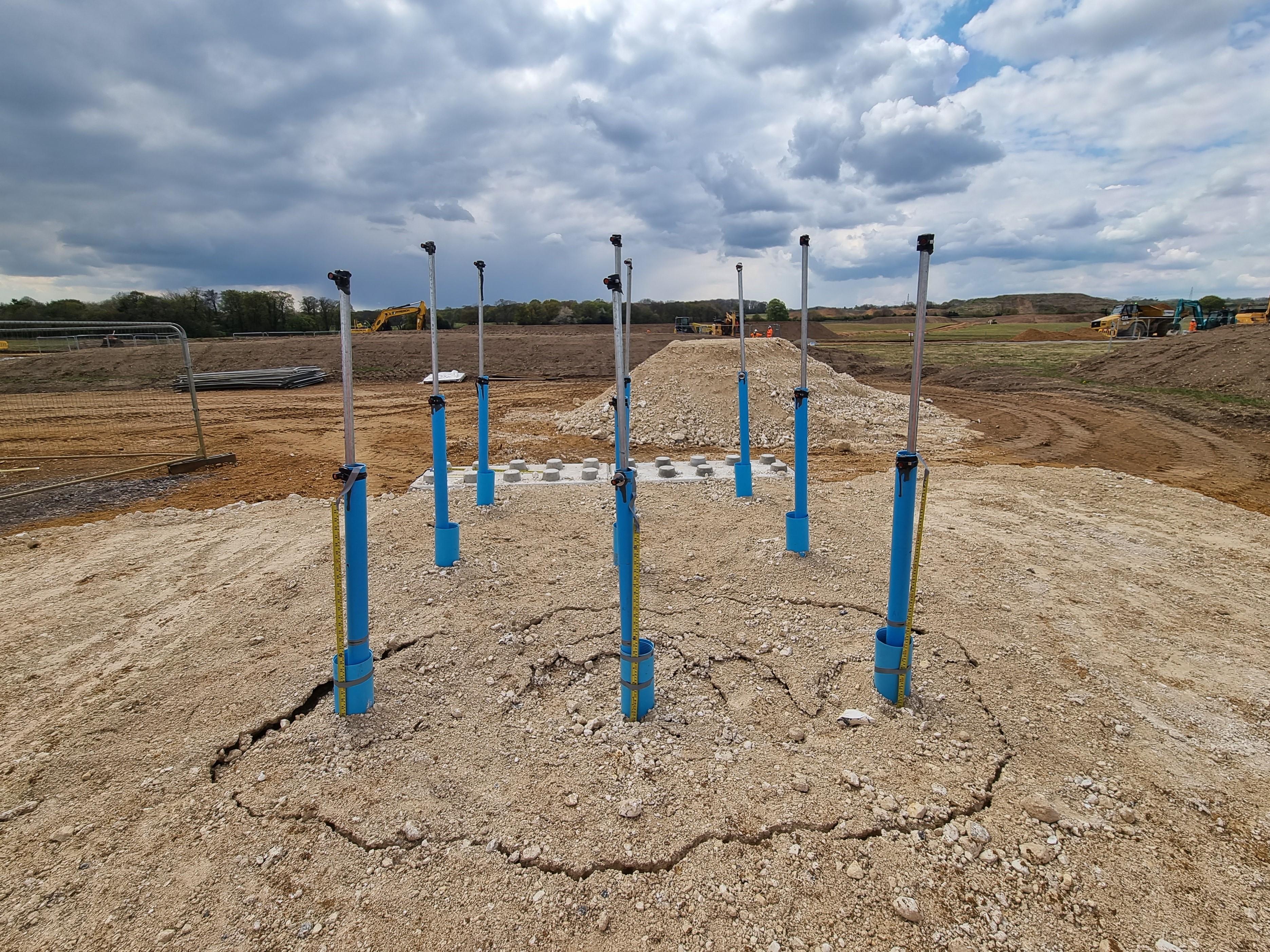
Submitted by L. Millard on Wed, 15/09/2021 - 10:52
Image courtesy of HS2
Articles in industry titles New Civil Engineer, Ground Engineering and BIM+ showcase the HS2 trial of a standard ground-stabilising mesh woven with fibre optic cables co-developed by CSIC, the Huesker Group, a manufacturer of geosynthetic textiles, and infrastructure monitoring company Epsimon Ltd.
An HS2 construction site has provided the test bed for the potentially far-reaching fibre optic technology that can sense minute ground movements in embankments and cuttings, and could help prevent land slips and detect the formation of sink holes. The team, which also included project contractor Align, its designer Jacobs, and Epsimon Ltd, created a test pit at the site to trial the smart grid technology by simulating ground movement.
Developing a capability for early detection of movement, and taking precautionary action, could deliver huge savings in maintaining HS2’s embankments and railway cuttings, as well as the wider railway and road networks. The importance of developing this technology is underlined by the increasing frequency of extreme weather and its effect on ground conditions.
CSIC works closely with industry partners, including HS2, to accelerate industry adoption of innovative solutions by developing and testing new technologies on live projects. With this unique new sensing product, fibre optic cables are fully integrated in the geogrid during production by Huesker just like standard yarns. This opens a wealth of new opportunities to use fibre optic sensing in geotechnical applications, as the geogrid vastly improves strain transfer from the soil to the sensor Dr Cedric Kechavarzi, CSIC Operations Manager and a Director of Epsimon
Dr Cedric Kechavarzi, CSIC Operations Manager and a Director of Epsimon, said: “CSIC works closely with industry partners, including HS2, to accelerate industry adoption of innovative solutions by developing and testing new technologies on live projects. With this unique new sensing product, fibre optic cables are fully integrated in the geogrid during production by Huesker just like standard yarns. This opens a wealth of new opportunities to use fibre optic sensing in geotechnical applications, as the geogrid vastly improves strain transfer from the soil to the sensor.”
The first stage of the Sensorgrid trial has already taken place at HS2’s Chilterns tunnel South Portal site where sturdy, water-filled bags were laid in the base of the pit, with sections of Sensorgrid laid over it and subsequently buried. The geogrid was then connected to a spectrum analyser which generated pulses of light that travelled through the fibre optic cable. To simulate ground movement, water was released from the bags causing the weight of the ground above to move and strain the mesh, which in turn caused a change in characteristics of the backscattered light spectrum continuously monitored by the analyser.
Align’s Innovation Manager, Nick Podevyn, said: “A lot of hard work has gone into this innovation, which has been in incubation for more than a year. It has been an exemplar of open collaboration and working as one team to deliver the solution. It’s fantastic to see the prototype being physically tested on our site and then the technology being implemented on the live project.”
The successful trial demonstrated that Sensorgrid can detect small ground movements at an early stage and at the millimetre scale. The team estimates that on construction costs alone, proactive preventive action enabled by Sensorgrid would be up to 10 times less than the cost of repairing ground that has failed. The benefits of disruption reduced or avoided would be in addition to this saving.
HS2 Ltd Innovation Manager Rob Cairns said: “Sensorgrid is a great example of how we’re leveraging HS2’s size and scale to draw on British expertise to develop a technology and demonstrate its innovative capability in the early stages of construction. This will act as a test bed for proving out significant benefit to the operational railway, with long term benefits in bolstering the resilience of the UK’s transport network.”
The technology is now undergoing a full-scale live trial elsewhere at HS2’s South Portal site near the M25 motorway, where two kilometres of Sensorgrid are being incorporated into a cutting for the railway, which will provide continuous data to the monitoring team over the next two years.
Related articles
Read HS2 ‘HS2 trialling fibre optic tech to head off subsidence and ground movement’
Read New Civil Engineer ‘Network Rail and HS2 look to fibre optic technology to monitor railways’
Read Ground Engineering ‘Earth movement detection system trialled on HS2’
Read Bim+ ‘HS2 tests fibre optic tech to detect ground movement’
